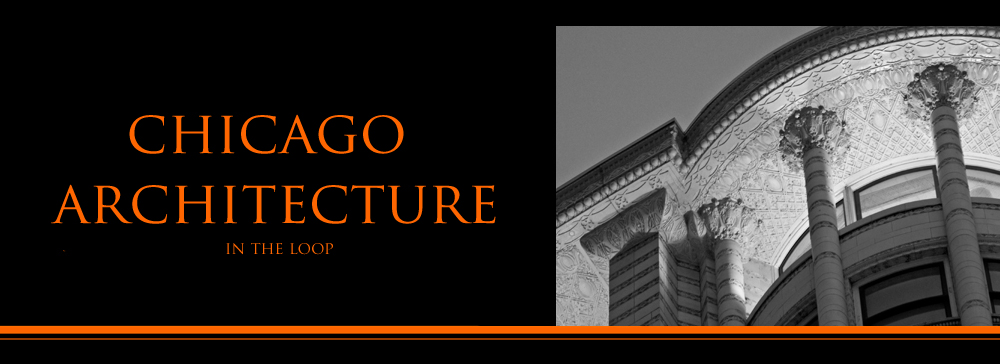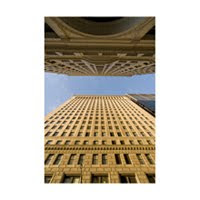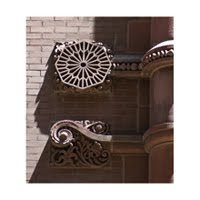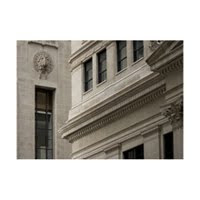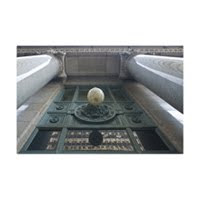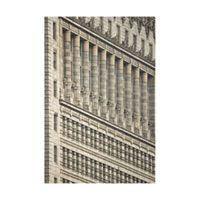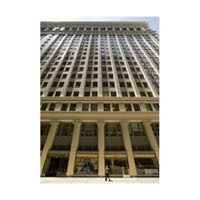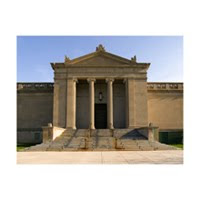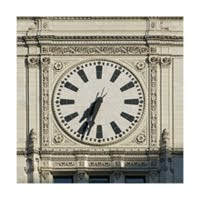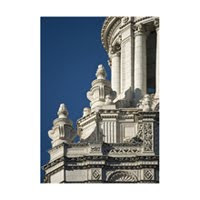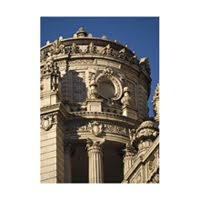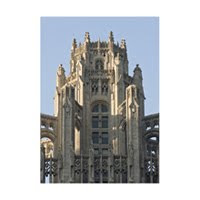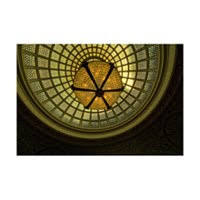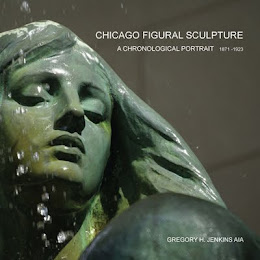I visited the Auditorium this week and toured the Theatre with one of Roosevelt's very knowledgeable docents. The sixth floor balcony system, partially suspended and entirely separable from the rest of the Theatre is a remarkable piece of engineering. And for me, it was new knowledge. Also new knowledge was the fact that Mr. Form-Follows-Function, our Hometown-Hero Louis Sullivan had applied FAKE ARCHES to the ceiling of the Theatre. It was as if I had discovered that there was no Santa Claus....... FAKE ARCHES.
Today, on a Chicago Architectural Foundation Tour, I learned that Daniel Burnham ("who was a businessman but not a real architect") faked his Beaux Arts Columns. (eg. there was "steel inside." And of course, that was BAD. (Though Sullivan remained GOOD) And then in rapid fire repartee I learned that there was nothing original about the Beaux Arts facade of the Art Institute. Nothing. "You can find buildings like that all over Europe." (BAD) Could it possibly be that our arbiteurs of good taste had made a mistake?
This isn't the first time I've run into this kind of conceptual/historical architectural dissonance. But perhaps with the attachment of the Anti-abortion Amendment to the Health Care Debate and the newfound, heartfelt remorse over our failure to rescue Bear Stearns I have less patience with re-written history and mindless opinion.
At least in Chicago, at least with Architecture, we have what we have and it is all good. Louis Sullivan's glittering arches (structureless though they may be) glitter with a young mind's early attempt with original ornament. Daniel Burnham's penchant for the Beaux Arts resulted in his trust for Peirce Anderson and the stunning row of Ionic Columns at the base of People's Gas. (Not to mention the Field Museum) Frank Lloyd Wright remade Oak Park. Prairie School. Bauhaus. Beaux Arts. Modernism. These are not Oppositions. They are each and all coin in our hands. To be treasured. Respected.
The Restoration of Board of Education Building and the Preservation of Michael Reese are not unrelated issues pursued by opposing forces. And Albert Fleury's classic allegory above the proscenium of Louis Sullivan's stunning stage represents perfect Unity.
.
 I've received a couple of notes asking about the slowing of posts to this blog. Apologies are due. But it is also with great pride that I will shortly be announcing the publication of CHICAGO FIGURAL SCULPTURE. Volume I 1871 thru 1923 -- which has taken more time than I could have ever imagined. Take a look, too, at the new photography presentations at Images in the Loop.
I've received a couple of notes asking about the slowing of posts to this blog. Apologies are due. But it is also with great pride that I will shortly be announcing the publication of CHICAGO FIGURAL SCULPTURE. Volume I 1871 thru 1923 -- which has taken more time than I could have ever imagined. Take a look, too, at the new photography presentations at Images in the Loop.
On a lighter note, on today's CAF Tour I met DESIGNSLINGER -- in person. And would like to take this opportunity to again recommend their work, with best wishes from CHICAGO AND POINTS NORTH.
Next week, we'll be back on message, with a review of the Com Ed Building.
TO SEE ADDITIONAL PHOTOS OF CHICAGO ICONS VISIT IMAGES IN THE LOOP
